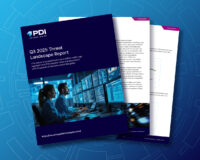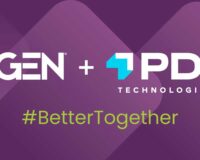
The very mention of “rip and replace” is a painful thought for any business. Legacy systems or even good-old spreadsheets are oftentimes too comfortable and therefore hard to give up. That’s especially true when they’ve helped you build a successful business. Considering complacency is a natural human tendency, you might be asking yourself, “Why would I really want to change a winning team?”
For football enthusiasts, one answer that might resonate is the lesson you can take from German national team manager Joachim Löw during the 2018 World Cup. When defending champion Germany decided to stay with the status quo, their World Cup ended well before the finals. The nuance of success comes from knowing how and when to take something that’s already been successful and still decide to change it to make it even better. Doing so requires the right mix of experience and insights that lead to refinement.
This approach is in direct contrast to what many businesses perceive as the almost-automatic need to rip everything out and start over again when evaluating their IT systems. No exceptions and no hesitations, similar to ripping of a bandage. Just get it done and hope that it’s as pain-free as possible.
Start Over or Adapt as You Go?
The good news is that you don’t always need to rip off the bandage to get where you want to go. The pragmatic business approach lies within the Aristotelian golden mean. When thinking about whether it’s time to upgrade or enhance your IT systems and technology stack, you need to determine how scalable and flexible your current infrastructure is—and whether there’s room for growth and transformation. If you find something is lacking, you need to examine every component of your infrastructure to identify what’s worth keeping and what you need to replace.
There’s likely a happy medium where you can make incremental, targeted improvements that give you the operational efficiencies to support your business and your customers in a frictionless fashion. Look for upgrades and IT systems that can help your business grow even as your requirements change.
Modernizing your IT stack starts with a strategic objective to become more agile and adaptive in a rapidly evolving marketplace. Here are some aspects you should consider during your evaluation:
- Cloud environments: When the pandemic hit in early 2020, companies that had already moved their operations to the cloud typically fared much better than office-bound organizations. Cloud-based systems provided more flexibility, allowing staff to access technology systems from anywhere—especially the back-office systems critical for finance, inventory, reporting, and other functions. C-store chains quickly discovered they could reap the benefits of cloud environments, even if their infrastructure felt hardware-centric. As long as you have the right connectivity and security in place, leveraging the cloud can open up a whole new world of possibilities and actionable insights.
- Emphasis on integration: Data silos and legacy systems—in a chicken-and-egg manner—have often been roadblocks to digital transformation. When forming your technology strategy, look for solutions that leverage the power of an open platform, adhere to industry standards, and provide reliable APIs to let data flow with speed and accuracy across your ecosystem.
- Innovation with a purpose: With so many businesses embracing cloud-based platforms, there’s a great opportunity for more unified solutions that will drive the next wave of innovation. For example, does your legacy in-house fuel pricing system leverage technologies like machine learning? Updating your existing processes and systems with the latest technologies can be a great way to bridge the old with the new.
- Importance of security investment: Technology adoption is accelerating to keep up with consumer demands, and many businesses are deploying more in-store applications and edge devices. Although they provide great convenience for customers, these Internet-connected endpoints also serve as potential entry points for cyberattacks. Securing your networks and devices is critical to ensure customer trust and loyalty to the brands and locations you operate. Today, almost any investment in security is a strategic investment in your business.
Rethink the Status Quo
To stay ahead of the competition, convenience retailers should always be examining their technology stack and evaluating what might need a refresh. Wherever your organization is on its journey toward digital transformation, PDI can help you evaluate your technology stack and keep it aligned with your long-term business strategy.
Whether you’re looking for the latest software or creative ways to overcome new challenges, PDI can help you rethink the status quo and act on new business opportunities. This year, make a resolution to rethink what you have and what you need.







